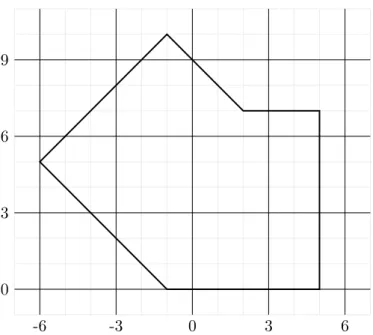Scientific Computing I
Wintersemester 2018/2019 Prof. Dr. Carsten Burstedde
Jose A. Fonseca
Exercise Sheet 3.
Due date: Tue, 6.11.2018.Exercise 1. (Maximum principle) (6 Points)
Let Ω a bounded domain inRdand La second order linear elliptic differential operator and u∈ C2(Ω)∩ C( ¯Ω). Assume that
Lu=f ≤0 in Ω. (1)
Show that uattains its maximum on the boundary of Ω.
Hint:
• First prove the case f <0 assuming that there is an x0 ∈Ω with u(x0) = sup
Ω
u >sup
∂Ω
u. (2)
Perform a suitable coordinate transformation to obtain a contradiction.
• The casef ≤0 can be handled like the previous case by considering
w(x) =u(x) +δ||x−x0||2, (3) forx0 as in (2) and someδ >0 sufficiently small.
Exercise 2. (Corollaries of the maximum principle) (6 Points) Let Ω a bounded domain inRdand La second order linear elliptic differential operator.
a) Ifu, v∈ C2(Ω)∩ C( ¯Ω) satisfy
Lu≤Lv in Ω, (4)
u≤v on∂Ω, (5)
prove thatu≤v in Ω.
b) For the differential operator Lu:=
d
X
i,k=1
aik(x)uxixk +c(x)u, withc(x)≥0, (6) prove the following weaker form of the maximum principle: IfLu≤0, then
sup
x∈Ω
u(x)≤max{0, sup
x∈∂Ω
u(x)}. (7)
Hint: Lu−cu is elliptic.
1
-6 -3 0 3 6 0
3 6 9
Figure 1: Grid and domain for Exercise 4.
Exercise 3. (6 Points)
Let Ω ⊂ R and u : Ω → R a sufficiently smooth function. For h1, h2 we consider T u: Ω→Rdefined as
T u:=αu(x−h1) +βu(x) +γu(x+h2). (8) Determine the coefficients α=α(h1, h2), β=β(h1, h2), γ =γ(h1, h2) such that
a) T u(x) approximatesu0(x) with order as high as possible.
b) T u(x) approximates u00(x) with order as high as possible.
Hint: Determine the coefficients such that the formula is exact for polynomials with the degree as high as possible.
Exercise 4. (6 Points)
Let Ω be the domain depicted in Figure 4. Suppose we want to compute a finite difference approximation to the solution of Laplace’s equation ∆u = 0 with Dirichlet boundary conditions on Ω. To this end we employ a uniform mesh Ωh with spacing h = 3, see Figure 4, and the five-point stencil approximation of the Laplace operator.
a) Give a suitable numbering for the points in Ωh and ∂Ωh. b) Write down the corresponding system of equations.
2
